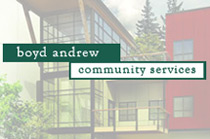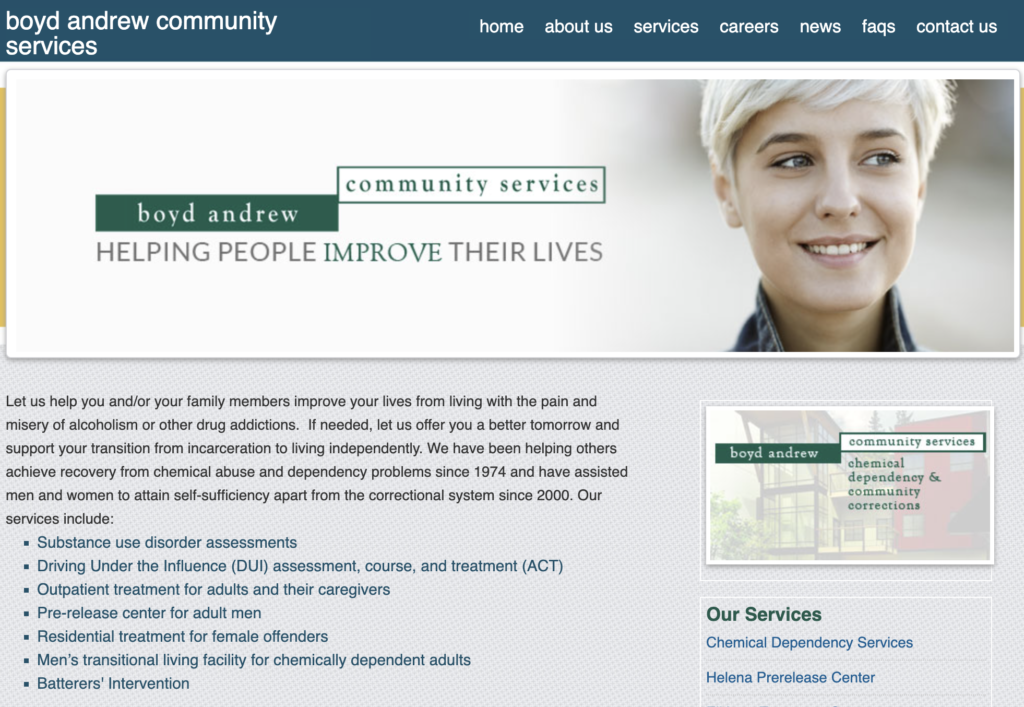In an effort to connect BHAM member organizations to one another, and so we can all familiarize ourselves with the work being done by our neighbors, we are creating a series of Member Spotlight posts, which will appear on our site throughout the year. Our hope is that you learn a bit more about other organizations whose work parallels your own, and you expand your network around the state of Montana.
Take a minute to learn about the Boyd Andrew Community Services, and join us in celebrating their dedication and successes.

Dan Krause,
Boyd Andrews
1. What is your name and the name of the organization you represent?
My name is Dan Krause, I work as the Chief Operations Officer at Boyd Andrew Community Services. We offer outpatient/intensive outpatient/co-occurring care in Lewis and Clark, Jefferson, and Broadwater Counties. We also operate an ASAM level 3.1 Therapeutic Recovery Home as well as a 105-bed male prerelease and a 50-bed secure treatment program for incarcerated women.
2. Where can we find your website?
www.boydandrew.com
3. Where in Montana are you located?
Our outpatient services are available in Lewis and Clark, Jefferson, and Broadwater Counties. The Helena Pre-Release is located in Helena and the Elkhorn Treatment Center for incarcerated women is located in Boulder, MT.
4. Tell us a bit about your organization, and the sort of work it does?
Boyd Andrew Community Services employs 65 staff in our various programs. We have been in business for nearly 50 years supporting those with behavioral health needs. Our work spans multiple levels of care and includes services for those who self-refer, are court referred, or are referred through the criminal justice system and the Department of Corrections.
5. Doing the kind of work you do can be both rewarding and challenging. What are some of the biggest ongoing challenges your organization faces as it works to accomplish its goals?
Staffing has really been a significant challenge for us and other programs who comprise the membership of BHAM. This matter is braided with the issue of rate reimbursement for services provided. Chemical Dependency Behavioral health and community corrections programs have been severely underfunded for a long time and the miniscule rate increases we receive have not historically and do not currently keep pace with cost of living. This matter has led to us being unable to remain competitive in attracting staff in our field. The rate needs to be tied to our costs and rate increases need to consistent and sustained. This unfortunately has not been the case. BHAM is involved in working on this with state partnership and I am hopeful this will improve.
6. Tell us about some of your accomplishments, and what you are most proud of as an organization?
One accomplishment noted recently regarding the success of the Elkhorn Treatment Center (ETC) is a significantly lesser rate of reincarceration 3 years post discharge when compared to our nations prisons. A recent review of reincarceration indicates that 17.5% of ETC participants returned to an incarceration setting within 3 years compared to national return rate average of 50%. This difference indicates that our work has a positive impact that reduces the cost of long-term placements in the correctional system.
7. Respecting the privacy of any individual(s), can you relay to us a story (or two or three!) about a time or situation that had a personal, positive impact on you in the course of doing your job?
There are many stories, but one that has put wind in my sail recently is the story of Leanna who has allowed me to share her first name and story. Her story really speaks to the hope I have for all the residents of the Elkhorn Treatment Center. Leanna came to the Elkhorn treatment center following a six-year battle with methamphetamine addiction. Her use of meth progressed to consuming the drug via needle and also lead to her conviction of three felonies. She was sentenced to Elkhorn and came to the facility after a long jail stay. She admits that during her long jail stay she had a change in attitude and came to believe that she needed help rather than hold to her erroneous belief that she could continue to handle all of her problems on her own. Leanna has shared with me since her discharge that while at Elkhorn she gained the willingness needed to engage fully in recovery. She also learned to be honest and open minded and to change her manipulative ways. She recently informed me that she had a long history of minimizing and rationalizing her behavior and grew to admit her faults but more importantly learn to grow from them and her past. She is now engaged in treatment court in Great Falls where she is a phase 3 participant and leading a great life. She is regularly engaged in NA, AA, and another program named Sober Life. She has a job at a treatment center in Great Falls where she works as a treatment assistant. This allows her to help others who are in the same shoes that she once was in. She rents her own home, is gaining trust with her family, has shared custody of her children, and recently bought a truck with her own money. She’s very happy and has a great relationship with her kids and reported to me that she enjoyed this last holiday season as it was the first one that she’s been able to spend with her children in three years.
8. What are some pros and cons to working in behavioral health in Montana?
Work within the behavioral health realm is very important. If someone is mission driven and wants to place a positive footprint in his or her community, this work is a vehicle to do so. The drawback is the pay. The folks who work in the behavioral health field in Montana are making a decent living but are not in higher income brackets for the most part.
9. Thinking of the population you serve, and the areas of behavioral health you are most involved with, if you could snap your fingers to make one change, what would it be?
Sustained funding that meets the need of a strong system of care as well as a deeper workforce to bolster programs statewide.
10. If you had to give a shout out to another BHAM organization for doing exceptional work, what org would it be? Why?
There are many, but I would like to recognize Alternatives in Billings. They are offering outpatient care through their recently opened Compass program and also work in the correctional arena. They are wonderful in every way.
11. Any other shout-outs or kudos for Montana’s behavioral health heroes?
The collective membership of BHAM is amazing. Seeing the membership working in concert to improve care statewide is inspiring. I am particularly proud of the traction that BHAM has made in influencing our system for the better.
To learn more about Boyd Andrew Community Services, and to see what they have going on, check out their website:

